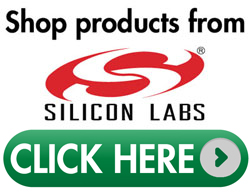- Home
- Symmetry Blog
- From Silicon Labs: "IoT Hero Hager Group Embraces Connectivity Challenges"
From Silicon Labs: "IoT Hero Hager Group Embraces Connectivity Challenges"
About Lance Looper
We recently had the chance to speak with Jean-Noel PAILLARD, advanced studies manager at Hager Group, a 62-year-old German-based company providing solutions and services for electrical installations in residential, commercial, and industrial buildings.
With an extensive history of making electronics work seamlessly within buildings, the family-owned Hager Group has a unique perspective to modern today connectivity issues. Hager Group solves multi-protocol and inoperability issues regularly for its global client base, and recently released a new smart home platform for building automation. Jean-Noel shared his insight on why the company developed the new platform, and explained some of the current challenges associated with connectivity standards.

Tell me about the importance of multiprotocol connectivity and why it’s important to your customer base.
New applications and devices are coming out so quickly, making interoperability a key challenge in today’s technology landscape. There are numerous wireless protocols on the market, and each has its own connectivity strengths and weaknesses, depending on the application. So instead of building new connectivity protocols for each application, we use existing standards and figure out the best ones for each application. We work hard to find the right connections and build the bridge to create the right technology for each of our services and solutions.
Sometimes it seems as if the market sees existing wireless standards as a “standards battle” vs. everyone trying to work together. Do you think eventually one standard will emerge as the winner?
In my opinion, no connectivity protocol has emerged as the winner yet, and it’ll be an extremely long time before that happens - if it does at all. In the meantime, you have to be agile and willing to work with numerous technologies and standards. Hager Group has the right tools and technology on board to do this effectively, and it is one of the core values we provide to our customers.
Can you tell me about your new smart home platform and smart RF module? What was the impetus for creating the technology?
The first driver for us to create the platform was the size and growth potential of the smart home market in the future. We built the platform to ensure we could serve our customers as successfully as possible as IoT adoption in buildings continues to grow. Depending on the country or region we are serving, the technologies and standards vary greatly, creating inoperability and wireless challenges. By building a new platform, we could overcome this challenge and address all kinds of services and solutions, regardless of region. But in order to do this, we needed a platform that could handle multiple frequencies and protocols.
We built the platform with our OEM customers in mind, as they have specific requirements and really need a platform addressing a variety of protocols. In addition to being multi-protocol, we knew the platform had to be as small as possible, require low-power, and be able to address numerous applications.
Is that how Silicon Labs’ Wireless Gecko became involved - size and energy consumption were important?
Yes, exactly. The Gecko is tiny and great in terms of RF transmitting and receiving, plus the security and encryption elements on the SoC are ready to implement and best in class.
What was the technology evaluation process like?
We began the project in 2015 and we were originally looking at three companies, with Silicon Labs being one of them. We ended up rejecting one company early on based on its proposal specs, and the other two competing technologies were directly benchmarked on technical design and technical experimentation. We conducted a good amount of measurement and tests, and finally, after a 4-6-month process, we selected Silicon Labs as the best and the most evolutionary solution.
Tell me a little bit about the 2-year development process for the platform. What were your obstacles and/or surprises?
From a timing standpoint, we wanted to be aggressive, so we worked together with Silicon Labs in a tight partnership to build the optimum design together. We provided the right specification needs to enable your team to adapt the design for our requirements. Technically speaking, the big challenge on our side was understanding the capabilities of your platform because it’s a comprehensive platform. That’s why a solid partnership was so important in this design process - both of the teams at our companies reacted fast to changes and development hurdles and always figured out the right answer at the right moment. The multiprotocol management was difficult because each time we modified one protocol, we had to verify that the other protocol wasn’t affected. Therefore, we were constantly checking to make sure the protocols were not compromising the performance of the other protocol and/or platform.
I know it was just released in January, but what has response been like so far?
Yes, we have implemented the platform for the first time on the hager solution that was introduced in January , making residential distribution boards connected, serviceable and safe : “Hello”.
Hager Group has been protecting homes and families for many years thanks to its reliable and safe electrical installations. As an innovative industrial company, we constantly extend beyond our technological foundations to face the growing demand for connected devices and smart solutions. An example of this is the breakthrough solution is “hello” , A connected plug-in device for an existing electrical installation. It provides real-time alerts in case of electrical issues to guarantee peace of mind for end-users. Away for the weekend? Got some special wines in the fridge? Meat or specific dishes in the freezer?
hello ensures the power availability on important circuits/appliances and will let you know in case of any electrical issue. Your wine cellar can therefore stay at the right temperature. We are currently working on new implementations that will come on the market soon.
Where do you see IoT and connectivity heading over the next 5-10 years?
Two big current trends requiring a lot of IoT connectivity are robotics and artificial intelligence. These new technologies will change IoT from being an obedient system to a mindless system, where you don’t have to care about your system – it works on its own. Today you still have to ask your system to do something, and I think tomorrow you won’t need to.
Moreover , I see IoT solutions, services, and applications being used more for mobility in the future, especially when we speak about transportation, such as electrical vehicles. The challenge will be to connect the electrical cars and the smart home together in a secured, efficient and eco-friendly way.
Source: https://www.silabs.com/community/blog.entry.html/2018/05/31/iot_hero_hager_group-d1QW


